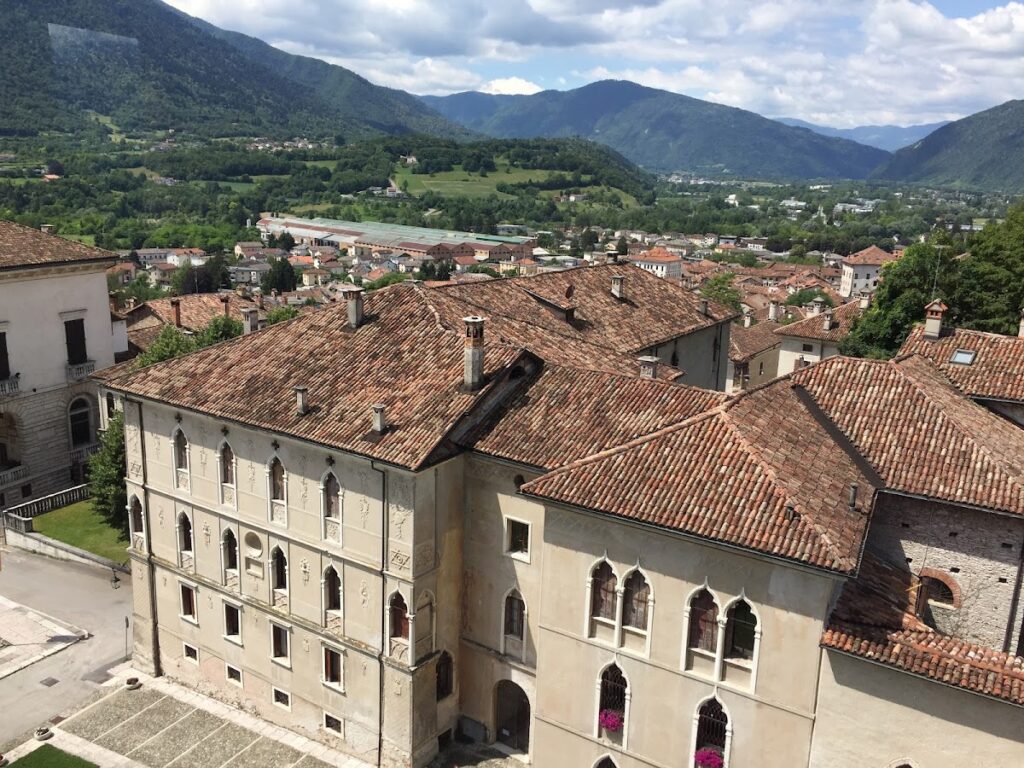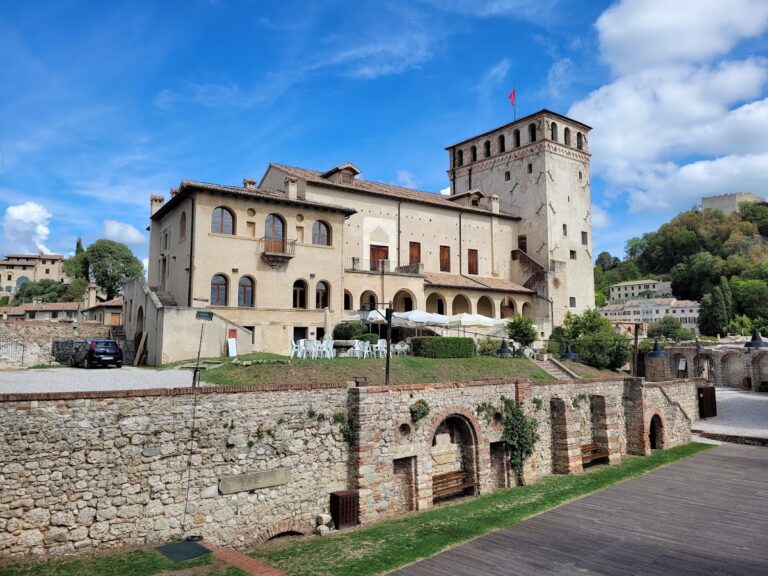Castello di Alboino: A Historic Fortress in Feltre, Italy
Visitor Information
Google Rating: 4.2
Popularity: Very Low
Google Maps: View on Google Maps
Country: Italy
Civilization: Unclassified
Remains: Military
History
The Castello di Alboino stands at the highest point of Colle delle Capre in the town of Feltre, Italy. Although tradition links its origins to the Lombard era in the year 570, there is no direct documentary proof for this date, and it is possible that earlier defensive works existed here during Roman times because of Feltre’s strategic location at the convergence of several valleys. The first clear records of the castle date to the 11th century, indicating that it had been established well before then.
Throughout the Middle Ages, the castle was integrated into a communication network using smoke signals to connect with other military outposts along the Piave valley. During the 13th and 14th centuries, the fortress became a contested stronghold amidst power struggles involving the Da Romano, Carraresi, and Scaligeri families, as well as the Holy Roman Empire and the Visconti. In 1404, Feltre chose to join the Republic of Venice voluntarily. Venice maintained the city’s existing political institutions and spared the castle from demolition in 1421, since it served as an important border defense near Tyrol.
After Venice annexed Feltre, the castle’s military importance declined. Its last major involvement came during the 1510 conflict with the League of Cambrai when Emperor Massimiliano I’s forces set much of Feltre on fire. Despite widespread destruction, mostly of wooden structures, the castle remained standing. Feltre was subsequently rebuilt following Renaissance urban design principles, leaving the castle and a few medieval remnants as relics of earlier times.
For roughly three centuries afterward, the fortress was largely neglected and repurposed primarily as an arsenal. It also temporarily functioned as a meeting place before the Palazzo Pretorio was finished in 1533. The name “Castello di Alboino” is a later invention referring to the Lombard king Alboin, who never visited or commissioned the structure.
By the 17th century, the surviving medieval walls had fallen into ruin and no longer served defensive purposes. During the 19th century, when the area was under Austrian rule, a northern wing was added along with restoration work. In the 20th century, the site’s ownership became divided among state, military, and private interests. Parts of the castle were adapted as a youth hostel, a radio station, and residences, which complicated overall restoration efforts.
Remains
The Castello di Alboino presents a complex layout shaped by multiple construction phases and later additions, making its original form challenging to discern. Once much larger, the medieval fortress featured several concentric walls extending along what is now Via Luzzo. Many outer buildings were lost during the 1510 fire, which reduced the castle to its present boundaries.
The main entrance originally stood on the western side of the Clock Tower, known as Torre dell’Orologio. This gateway included a drawbridge spanning a moat near the church of San Rocco. Remnants of an original arched portal are visible in vertical traces on the tower’s west face. Embedded midway up this tower is a bas-relief dated 1324 bearing the coat of arms of Cangrande della Scala, a notable lord of the region. After the fire in 1510, access to the castle was changed to the current entry along Salita Ramponi, next to which a 16th-century residence was built for the Rettori, or governors. Pieces of frescoes remain on its exterior walls.
Atop the Clock Tower sits a distinctive crescent-shaped weather vane, originally from Middle Eastern design, probably installed during the late 19th century. It was damaged by Austro-Hungarian soldiers during World War I and later restored in 2017. The original vane is now displayed inside the tower, replaced outside by a replica. The tower itself underwent restoration and opened to visitors in 2018, featuring panoramic views and an interactive exhibit detailing the 1510 fire and the castle’s reconstruction.
The keep of the castle, called the Torre del Campanon, is the tallest and most prominent structure, standing nearly 35 meters high. It derives its name from the large bell it houses, which was cast in 1664 in Bormio. This bell was traditionally used to announce executions and summon civic assemblies until 1970. Above its entrance sits a bas-relief depicting three coats of arms: those of the Della Scala family, the city of Feltre, and an unidentified emblem. On the southern side of the tower, approximately 25 meters high, a lighter patch of plaster marks where a large fresco once depicted the Lion of Saint Mark, probably painted in 1518 by Morto da Feltre. This artwork was removed during French rule.
The Torre del Campanon and the Torre dell’Orologio remain the only surviving towers from what was once a series outlining the fortress. Two main curtain walls once connected these towers: an outer wall linking the Clock Tower to three other towers, and an inner wall enclosing the keep and central areas.
Within the former central courtyard—accessible from Salita Ramponi and a 19th-century dirt road—there is a well likely dating to the late medieval period. Its Venetian-style substructures are partially buried but remain intact.
The principal castle building features a large façade faced with light limestone, crowned with four Guelph-style battlements—distinctive crenellations with squared tops. Its stepped lateral profile adds to the imposing silhouette. Inside are a private chapel, a kitchen hall, and an armory. While most of the exterior frescoes painted by Lorenzo Luzzo in 1518 have been lost, many interior frescoes survive. This area is generally closed but opened during special events.
A northern wing of the castle, added in the 19th century, was designed to blend visually with the medieval complex but does not form part of the original fortress.
The steep northern slope of Colle delle Capre, once clear of buildings and used for grazing after the castle’s military decline, was planted as an arboretum called “Bosco Littorio” during the Fascist period and later became the urban park “Bosco drio le Rive.” In 2018, a severe storm known as Vaia uprooted many trees and caused damage to the castle walls. Restoration efforts began in 2020 to rehabilitate both the park and the affected portions of the fortress.










